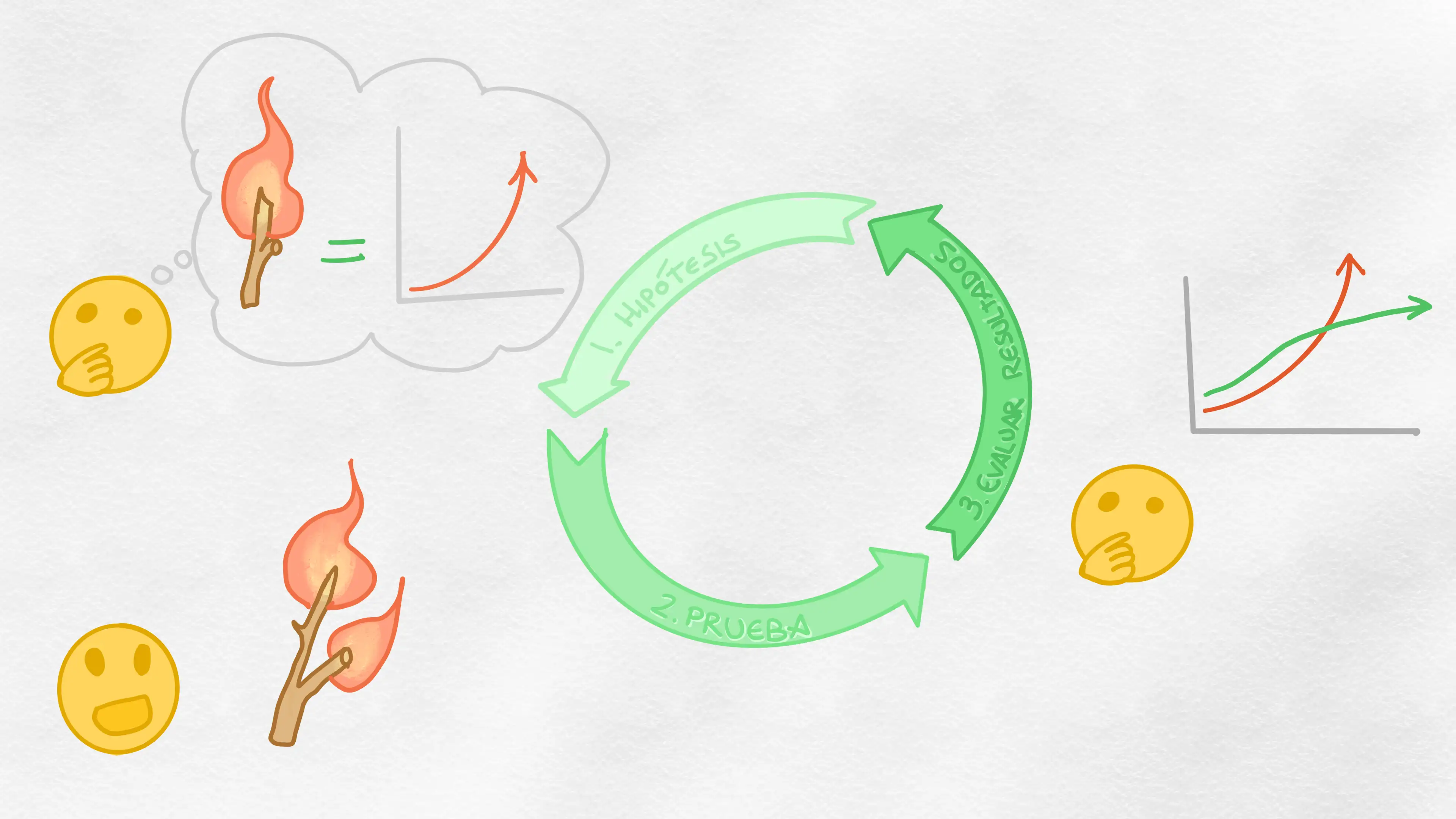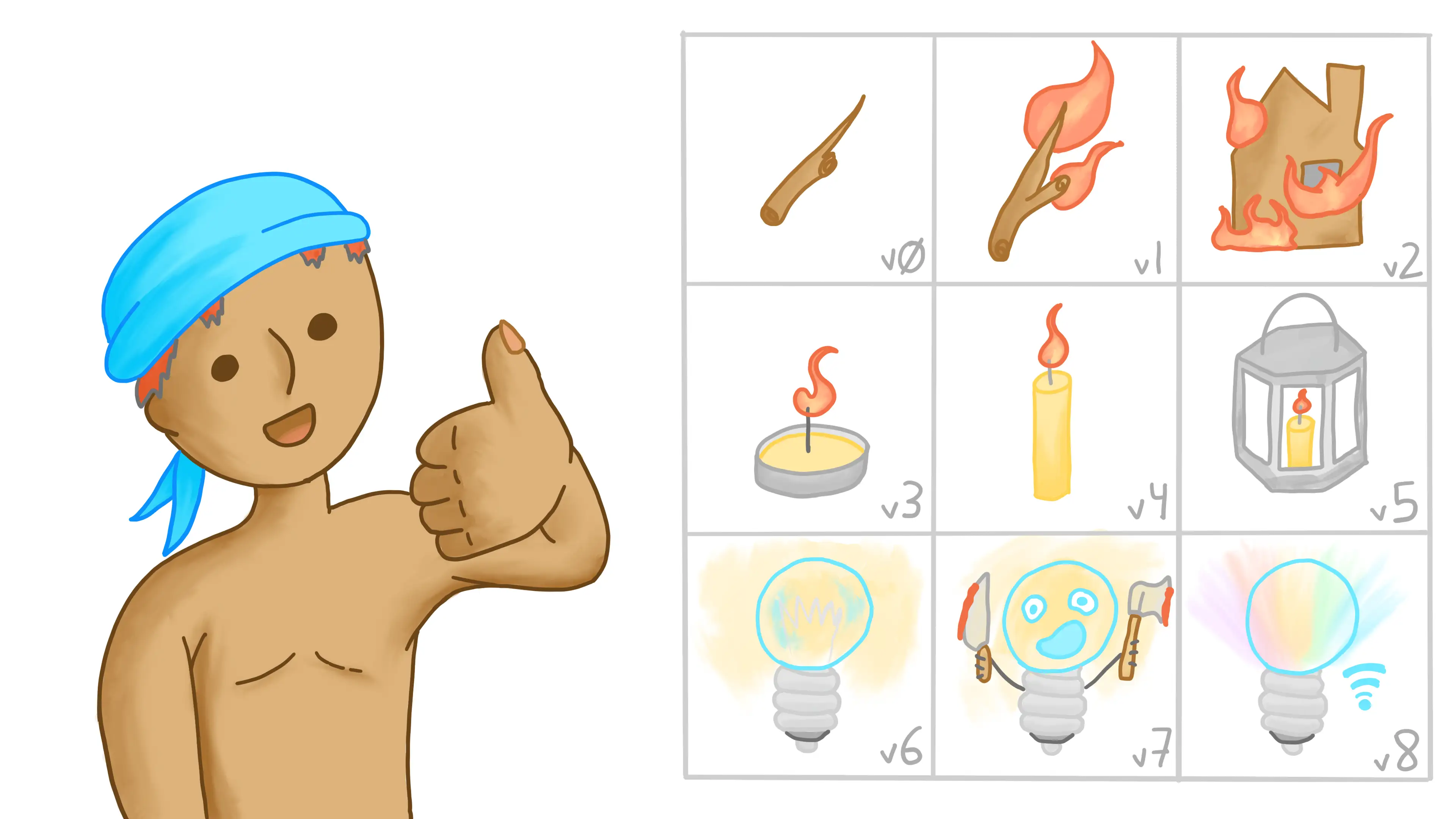You’ve had a great idea, you’ve analyzed it thoroughly, and you’ve realized it’s the best idea in the world. 🐓 You have a great plan, nothing can go wrong, you’ve got it all covered.
Shall we go for it? Shall we get to work?
Wait!
Imagine implementing your complete idea all at once. Your team works hard for several months, and when it comes to light, it turns out you haven’t taken the users into account; nobody likes your product. A total failure.

What’s next? Redo the project from scratch? This is an expensive mistake. It could mean the death of your idea.
Now imagine you only do a proof of concept. Something you know will fail in many areas, but that only took you a few days to implement.
You can afford to learn from mistakes as soon as possible, gradually improving, and over several months achieving total success. In those early phases, the mistakes have been cheap.
Assume you are going to fail. Whether a lot or a little, in something big or in the small details. The fact is, none of us are perfect.
But failing is good; it helps us learn and makes us better. The key is to:
- Make failures a part of your process.
- Make failing inexpensive.
And we’re going to see how to do this throughout this article.
This article continues the series How to Implement Ideas Without Murdering Anyone:
The Fast Feedback Loops

I started giving a lot of importance to “failing cheaply” after watching the video The 4 things it takes to be an expert.
In this video, several questions are raised. How can a carpenter become an expert relatively quickly? On the other hand, how is it that the reliability of an “expert” stockbroker is comparable to that of an amateur? What makes someone an expert?
It turns out that one of the key points is to get feedback as soon as possible to learn.
A carpenter can learn from his mistakes as soon as he finishes a piece of furniture. However, a stockbroker won’t know if his investment portfolio is successful until much later. The stockbroker cannot learn quickly enough.
Another example that made me a believer in “fast feedback loop” is Valve (Valve’s “Secret Weapon”).
Why are Valve games always so good?
Simply put, they test with users as soon as they can, and they do it frequently. Instead of waiting until the end of development and then having to make fixes to mitigate errors, they can rethink the games as early as possible.
“Fail cheap, fail often, learn from your mistakes.”
Minimum Viable Product and Iterative Processes
How do we apply this when implementing our idea?
First, by breaking your project into small parts.
Continuing with the virtual reality project, which we’re using as an example throughout this series of articles, at first we decided to deliver a fully functional product in one go. Our goals were:
- 100 active users per month.
- 30 mentions in major publications.
- A 10% increase in customers in the first month.
Wow, those are some pretty ambitious goals. And what if we don’t hit them? Well, that would be a big failure. After all the hard work convincing company management and dedicating months to the project, if you fail, no one will trust you again when you propose an idea.
In the end, we gain a little bit of common sense and decide to do something less ambitious.
What is the most essential part of our idea? What is the minimum proof of concept we could create to validate if our idea has traction or not?
We get to work defining an MVP (Minimum Viable Product), or proof of concept.
In our case, it’s about making a minimal interface that covers a single use case and looks really good in a video. Instead of launching it as a useful product, we’re going to release a video for April Fool’s Day, hoping it goes viral. Our new goals are:
- 5,000 views of the video in the first month.
- 100 mentions on social media.
- Gather insights about virtual reality interfaces, intending to use them for future projects.
A more modest approach.
If it works, we could apply what we’ve learned in future phases, such as:
- Publishing an article: “What We Learned Designing Our Product for VR.”
- Launching a private beta.
- Publishing an article and video: “Our April Fool’s Joke Became Reality.”
- Updating the product and using it as an excuse to continue making viral posts.
If at any point our project doesn’t work… No worries! The cost hasn’t been too high, and we’ve surely gained something useful, even if it’s just experience.
Two things could happen:
- Either we realize that, despite initially steering the project in the wrong direction, with a few changes, we can achieve success.
- Or we figure out it’s better to cancel it.
In either case, we’ve earned the respect of our superiors. We’ve shown that we know how to play it safe, basing our decisions on solid ground, and that we’re capable of innovating without a high cost to the company.
Being a bit Sneaky: Creating an MVP in Secret
It might happen that your MVP is so simple that you can implement it during a few spare moments and have it ready when you go to present your idea.
This is a double-edged sword, so think about the following before doing it:
Advantages:
- It’s easier to get an idea approved when it’s already tangible, so you increase your chances of success.
- Having something functional helps you better focus the idea and estimate costs more accurately.
Risks:
- Your idea might not be accepted in the end. Be prepared to accept that your effort may not bear fruit.
- It may look bad that you spent work time on something that wasn’t approved. Be clear that you haven’t neglected your responsibilities.
- If you do it in your free time, you could be setting dangerous expectations. Make it clear that it was an exceptional effort.
- The more you work on your idea in isolation, the more you’ll fall in love with it, and the harder it will be to accept feedback with neutrality. Be ready to let your idea evolve.
Think about your specific situation and weigh the options carefully. Having clear expectations will help you stay assertive and maintain your mental health in case of rejection.
Consclusion
Breaking our projects into small phases that allow us to receive feedback early is a strategy for success. It will also make our failures cheaper and viewed more positively.
Using fast feedback loops is a proven technique that works.
An MVP, or proof of concept, is a great place to start. Just be careful if you do it on the sly during your free time.
If you want to know more, check out other articles in the series How to Implement Ideas Without Murdering Anyone:
